There’s too much to write about our two week trip in one post, so I’ll be writing our experience in the Gambier Islands over a couple of weeks.
A while ago, Martin and I visited the Salon de Tourisme looking for great holiday deals.
Looking at the map of French Polynesia, you have:
the Society Islands (where we are) which are the most populous (includes Tahiti, Mo’orea, and Bora Bora)
the Austral Islands which are the furthest south
the Marquesas Islands towards the north-east
the Tuamotu Archipelago which is the largest chain of atolls in the world, spanning an area roughly the size of Western Europe, and
the Gambier Islands, which are the furthest east
We debated back and forth on where we should go, deciding on one atoll (Ahe, in the Tuamotus) and the Gambier Islands.
Why there? It was the furthest to get to, with a flight time of 4 hours. It was the most expensive as well, so the discounts at the salon went a lot further. Finally, it was the group of islands we knew the least about, and as a result they had an air of mystery about them.
There were only two accommodation options at the Salon, and we booked with Kura Inn in Rikitea, the main village on Mangareva, the largest island. And what a great decision it turned out to be.
Rikitea, the main village
The Gambier Islands all sit inside an atoll. When you arrive you land on the airstrip on the atoll. You then take a navette to the main island, Mangareva.
We were picked up at the quay by our hosts and welcomed with flower garlands. At the quay, a group of young people were launching themselves into the water. The sun was shining and the lagoon was an incredible turquoise.
The village is small and easily walkable, with big trees lining the street. There are a few little grocery stores, a few ‘snacks’ (casual restaurants/cafes and takeaways), the gendarmerie and medical centre, and finally the cathedral, all lined up neatly along the main drag.
Kura Inn
Our accommodation was a cute little bungalow just opposite one of the largest store and cafe (Chez Jojo). With a little kitchenette, living room, bedroom and bathroom, it was the perfect size and very cosy.
While many of the local pensions will provide food (1, 2 or 3 meals a day), food wasn’t included in ours. This turned out to be a good thing, as we were able to explore all the different snacks (the local word for a cafe, takeaway or food truck) which were fairly inexpensive and really tasty. There was one day where I went back to the same snack to get fresh sashimi twice in one day for around the same price as a McDonalds meal would cost in Australia.
A friendly welcome
The biggest highlight of our time here was how friendly the locals were. We had Bruno, who befriended us and took us on a tour of the island in his truck, all the kids hanging out at the local sports centre that played tag with us, and all the people who stopped us to chat.
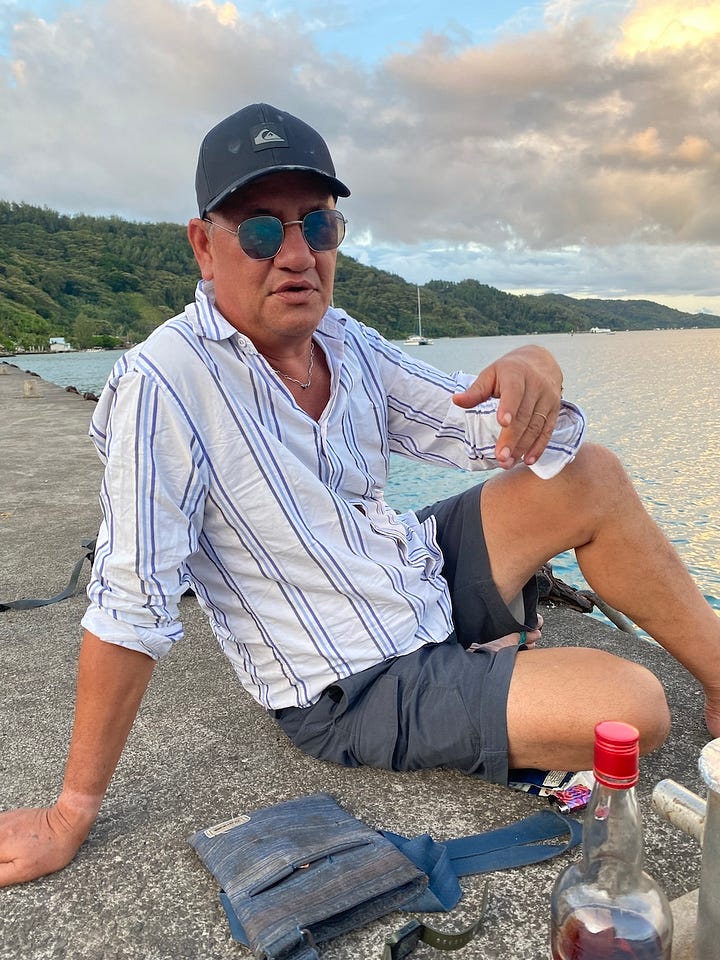
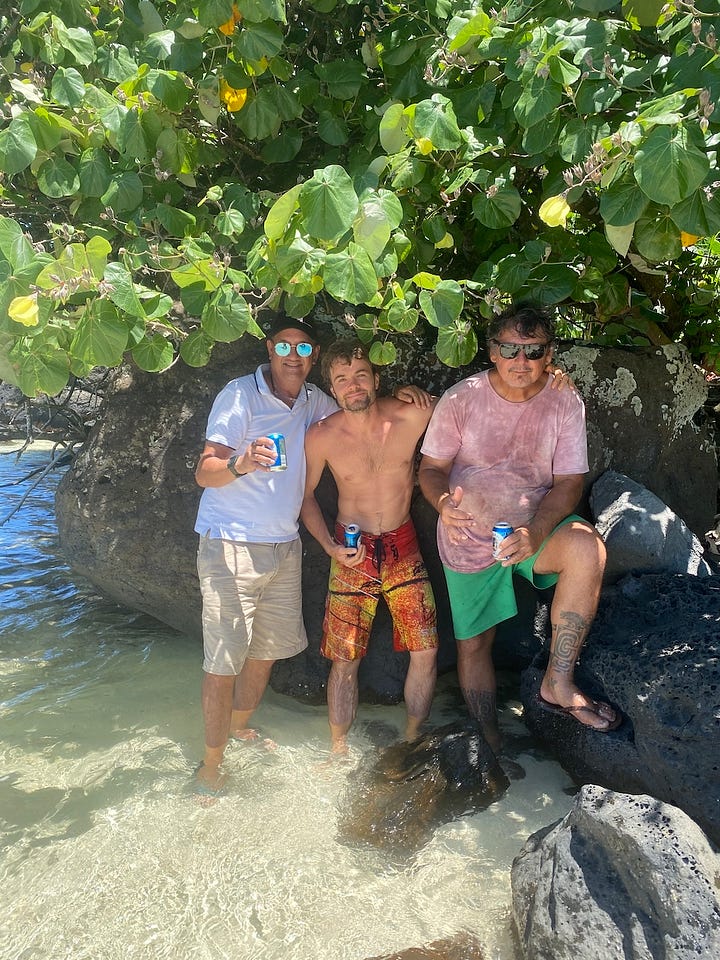
As you walk along the street, everyone says hi. When we stopped to pick some ripe mangoes off the ground, the man who owned the garden picked some fresh off the tree for us. We had a chat and he gave us his phone number, saying if we ever came back, we should get in touch and we could camp on his motu (island).
One morning, we went for a swim at the little local beach. Martin dived deep and then came up gasping. Something had gone down his pants and stung him in an unfortunate place. We went straight to the medical centre, where we found out it was a jellyfish. Not lethal, but very, very painful.
On the way back, we were waved over by a group of guys underneath an avocado tree. When Martin told one of them, Niko, that he’d been stung, Niko jumped to the rescue. He gave him some monoï (coconut oil) with turmeric to rub on the sting, a shot of homemade banana alcohol, and a puff of ‘special medicine’. Martin walked back home feeling great after that!
And some furry friends!
Sitting outside our front door when we arrived was an old dog. Droopy, sad, with an infected ear, scratching himself and staring at us with big eyes. He would follow us to the beach and back to the house.
 Tiktok failed to load.
Tiktok failed to load.Enable 3rd party cookies or use another browser
At first, we tried to shoo him off. But then we started feeling sorry for him. We left some food out for him and tried to get him into the water to wash out his ear.
One day, we did an electric bike tour of the island. On the way back, we started getting followed by a friendly dog. She looked like she had a little German Shepherd in her. She came all the way back to the house with us.
Well, Old Man Dog (as we’d decided to name him) perked up when this perky female was around. We found out that the female dog’s name was Kura-Iti and she was known for following tourists around. Old Man Dog was apparently a retired police dog, which made me sad that he wasn’t being looked after. We called him Officer Old Man Dog after that.
The two of them ended up following us around for the rest of our trip. They both hiked up two mountains with us (I was sure Officer Old Man Dog wouldn’t make it back, but he did, just very slowly), Kura-Iti came snorkelling with us, and we’d give them both a feed every night.
Eventually Kura-Iti went home, and Officer Old Man Dog’s ear infection cleared up. With a few feeds and a wash in the ocean, he was looking like a spring chicken again. We were sad to say goodbye to them both!
Coming up next…
Hiking Mount Auorotini (Duff) and Mount Mokoto
The 12 Apostles trail
An electric bike tour of the island
The most incredible churches and cathedrals
Our day tour to the other islands (where we got engaged!)





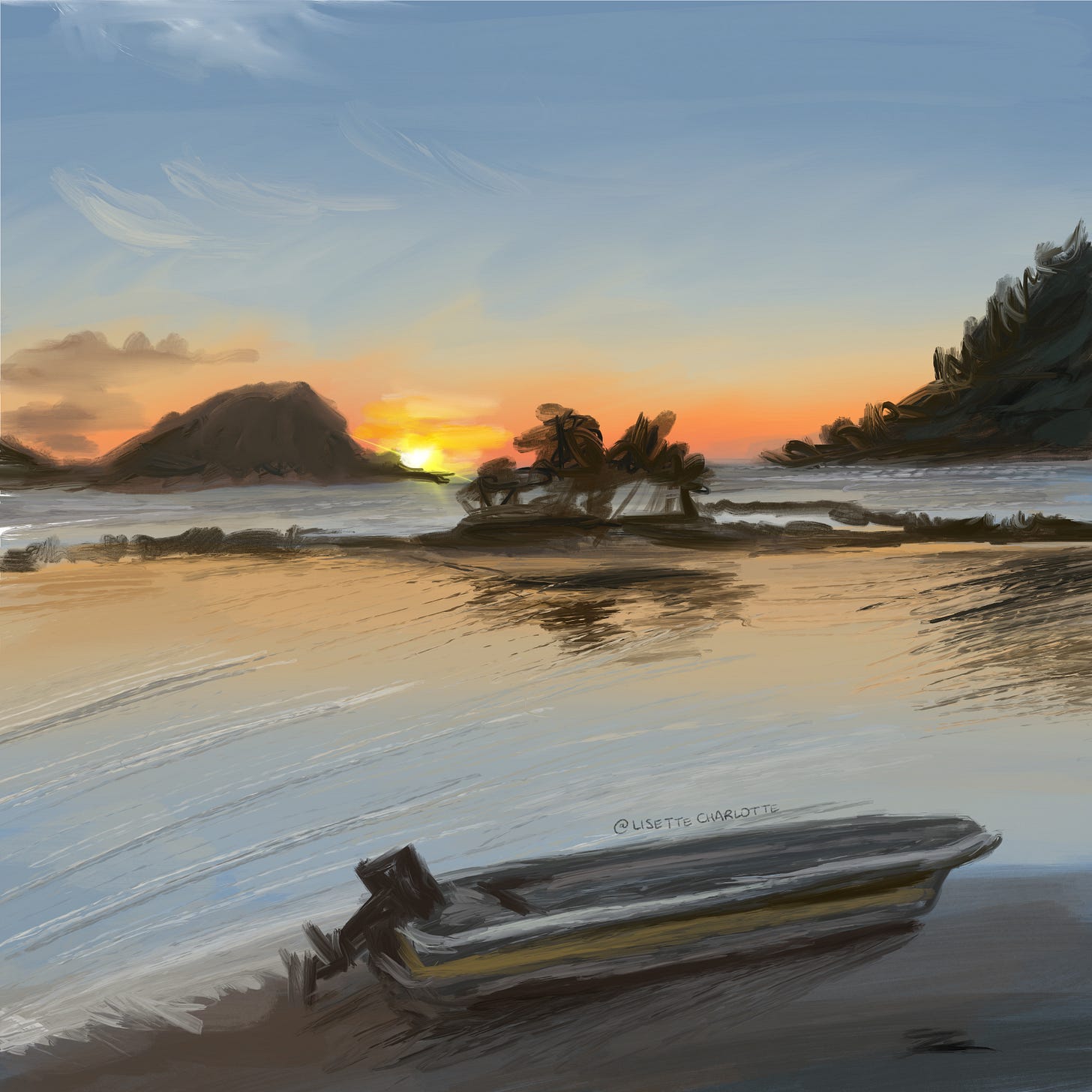



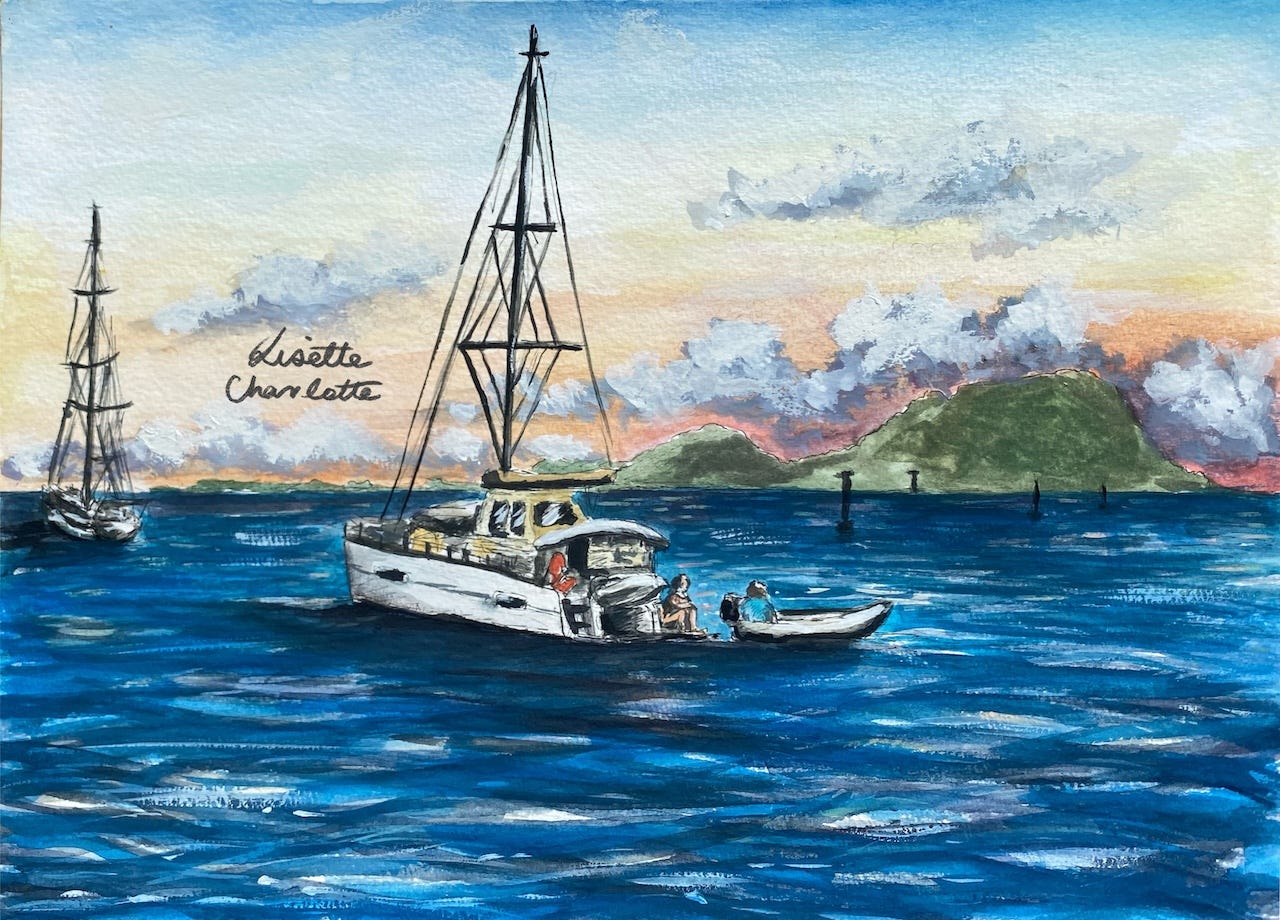
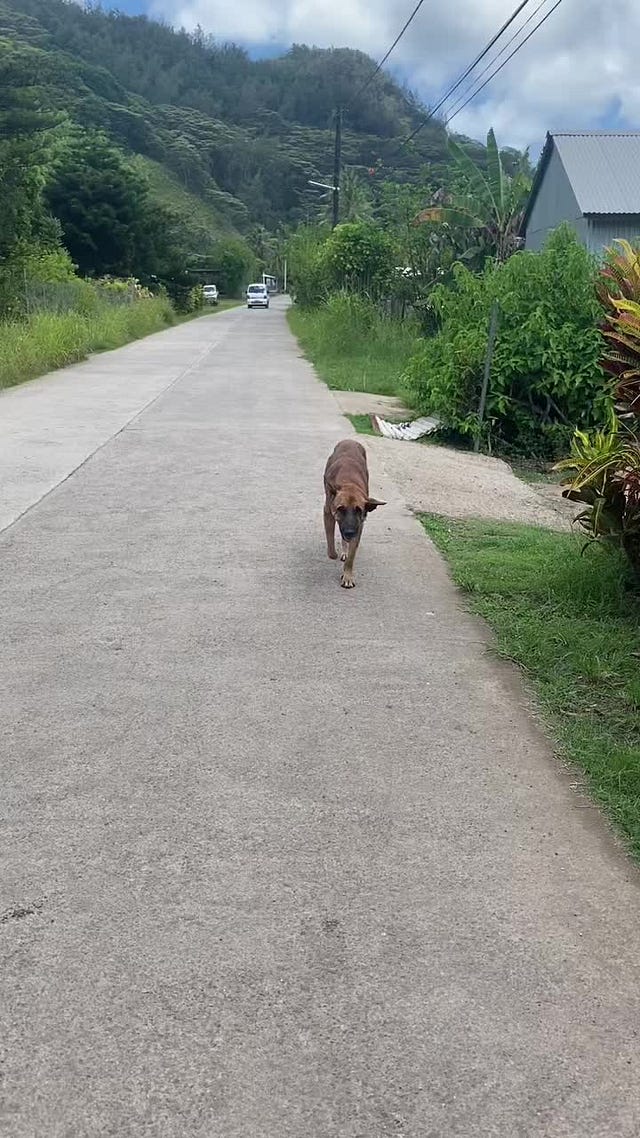

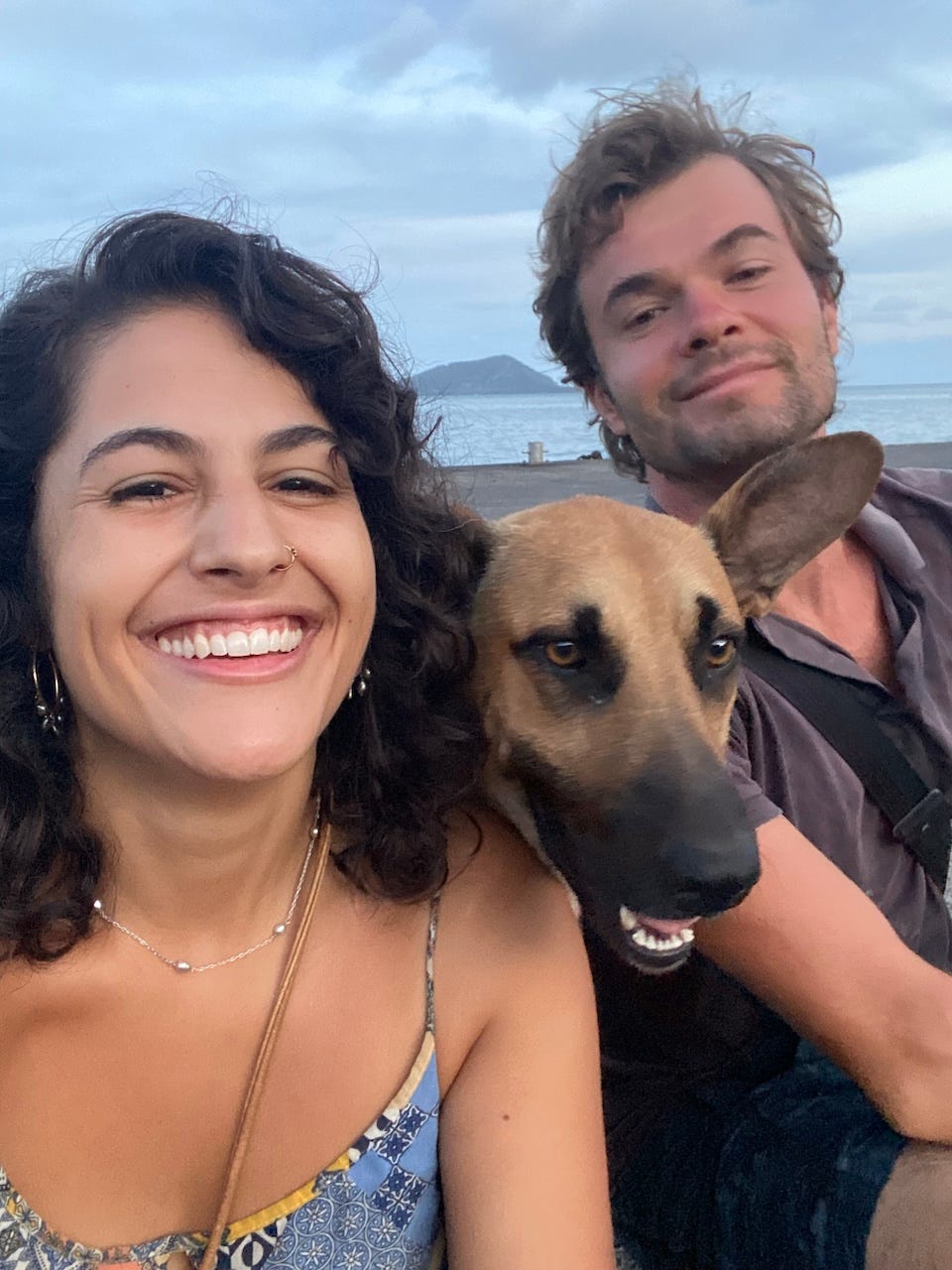
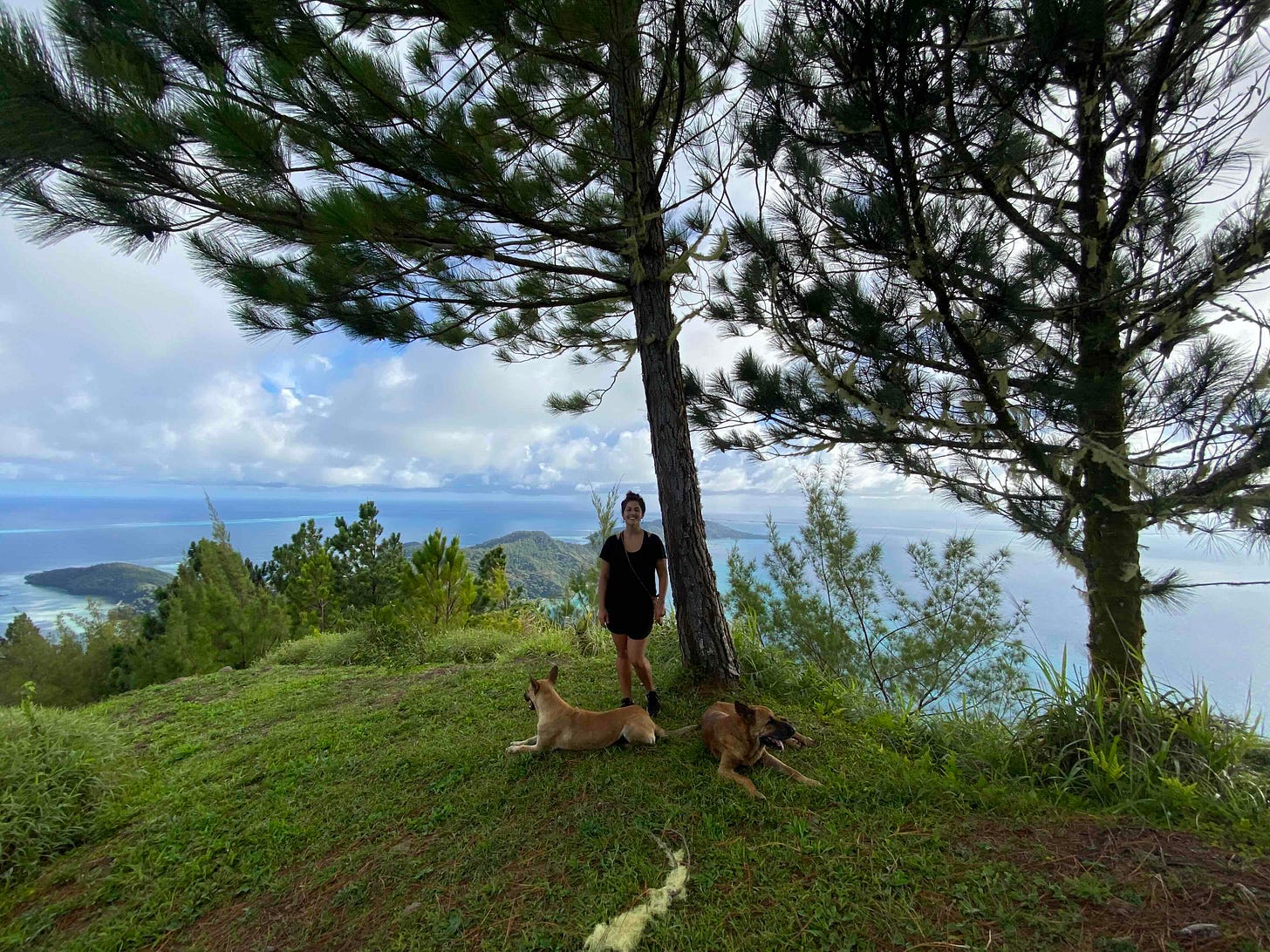

Looks like heaven- looking forward to the next chapter 🧡